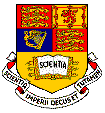Contents
5. Conclusion
6. Project Timescale Plan
7. References
5. Conclusion
The results of the project should be:
- A fully independent application to quickly model simple urban road networks.
- A simulation to animate user-defined traffic data on a road network.
- A simulation able to collect results accurate enough to compare two different road networks for through-flow.
- Application documentation and project background information.
- A set of simple traffic models and algorithms to solve them (written is Java).
Although Intelligent Traffic Systems are state-of-the-art and undergoing much research, this project does not have the scope to break new ground in traffic modelling. This project can however show the public a simulator that is quick to learn, easy to understand and fun to use.
As the simulations code gets written and tested, the results obtained will help validate or invalidate the specification. It is to be expected that the specification may under or over specify some aspects of traffic modelling and may have to be adjusted. These adjustments will be recorded and discussed in later documentation. Simulations help to make and validate decisions. The spec is an initial decision that I've taken and the application will test whether it is good initial decision or not.
Project Extensions Ideas:
Implementing the features listed in the "project limits" section could extend the projects realism and accuracy.
Other ideas include:
- Implementing emergency vehicle tracking. This would track police cars and ambulances and could adjust traffic signals at junctions to speed up their journey times and divert traffic away from incidents.
- Colour-coding vehicles. A vehicles colour in the simulation could help indicate information to the user such as acceleration, speed, destination, etc.
- Map reading and junction recognition. A program could try image recognition techniques of maps or aerial photographs to produce models of real road networks.
- A web interface to the application. It should be possible to publish estimated journey times to a web interface to allow commuters to view traffic situations or to generate automatic planned best journey routes.
6. Summarised Project Timescale Plan
| 11th January | Project outsourcing due. |
| Work on the graphics and animation features of the project. | |
| 18th January | Allocation of second markers and assessment teams. |
| ork on the back-end features to get accurate vehicle movement. | |
| February | Project review, status-report due. |
| Work on traffic-modelling tool to generate traffic data. | |
| Work on results section of the application. | |
| Work on extending the existing application to include all features specified. | |
| Work on the graphical user interface of the project. | |
| March-May | Revision and examinations. |
| Test the project. | |
| Work on project documentation as well as the final report. | |
| 13th June | Project report due. |
| Work on the project presentation. | |
| 17th - 19th June | Project Presentation. |
7. References
[1] Markos Papageorgiou (1991) Concise encyclopaedia of traffic & transportation systems. ISBN:0-08-036203-6
[2] Traffic Flow Theory carried out by Oak Ridge National Laboratory under the guidance of an advisory committee established by Transportation Research Board's Committee A3A11. (http://www-cta.ornl.gov/cta/research/trb/tft.html)
[3] Kent County Council. Intelligent Transport Systems (http://www.kent.gov.uk/sp/roads/inteltrans.html)
[4] SMARTEST Project. (Simulation Modelling Applied to Road Transport European Scheme Tests) Micro-simulation links. (http://www.its.leeds.ac.uk/projects/smartest/links.html)
[5] KLM. Development of Simulation models (http://www.kldassociates.com/simmod.htm)
[6] The Traffic Simulation Group at the ZPR (http://www.zpr.uni-koeln.de/GroupBachem/VERKEHR.PG/)
[7] US Department Of Transportation Adaptive Control of Transit Operations. (http://www.fta.dot.gov/library/technology/APTS/ITS/CHAP0.HTM)
[8] Microscopic traffic simulation for ATT systems analysis, a parallel computing version. J.Barceló, J.L.Ferrer, D. García and R. Grau, Centre de Recherche sur les Transports, Université de Montréal (http://www.tss-bcn.com/crtpap1st.pdf)
[9] TRAFFIC WAVES. William Beaty 1998 (http://www.amasci.com/amateur/traffic/traffic1.html)
[10] Urban Traffic Control (UTC) Systems. SIEMENS (http://www.siemens.co.uk/traffic/utc.htm)
[11] Lecture course on Models of Concurrent Computation. Iain Phillips, Imperial College.
[12] Traffic Signal Actuators: Am I Paranoid? 1993, 1997, John S. Allen (http://www.bikexprt.com/bicycle/actuator.htm)
[13] Traffic Signal Control. ITS Decision. 11/01/01 (http://www.path.berkeley.edu/~leap/TTM/Traffic_Control/traffic_signal_report.htm)
[14] TRansportation ANalysis SIMulation System (TRANSIMS). Los Alamos National Laboratory, Operated by the University of California for the U.S. Department of Energy (http://www-transims.tsasa.lanl.gov/index.html)
[15] Drew, D.R. (1968) Traffic flow theory and control. New York: MacGraw-Hill
[16] Lights years ahead. Chicago's state-of-the-art traffic system. (http://www.fcw.com/civic/articles/2000/Nov/civ-tech-11-00.asp)
[17] Simulation of Traffic Systems - An Overview Matti Pursula , Transportation Engineering, Helsinki University of Technology (http://publish.uwo.ca/~jmalczew/gida_5/Pursula/Pursula.html)
[18] Häkkinen S., and Luoma, J. (1991) Traffic psychology (in Finnish). Publication 534. Espoo: Otatieto Oy.
